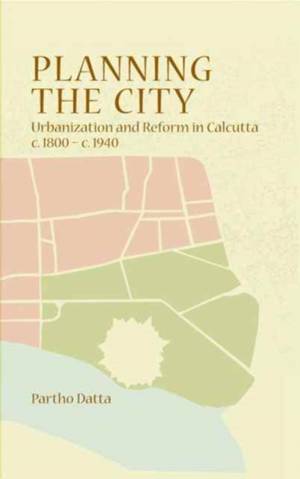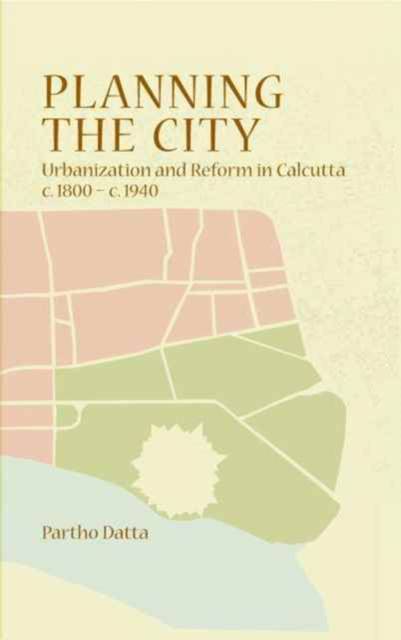
- Afhalen na 1 uur in een winkel met voorraad
- Gratis thuislevering in België vanaf € 30
- Ruim aanbod met 7 miljoen producten
- Afhalen na 1 uur in een winkel met voorraad
- Gratis thuislevering in België vanaf € 30
- Ruim aanbod met 7 miljoen producten
Planning the City
Urbanization and Reform in Calcutta, C. 1800 - C. 1940
Partho DattaOmschrijving
In 1820, an unusual letter was published in the Bengali newspaper Samachar Darpan. It was a plaintive appeal from the rats of the city of Calcutta saying they were being unfairly displaced from their ancient dwellings. Calcutta was indeed going through momentous changes - new roads and neighborhoods were being planned, channels for draining were being dug, new structures were coming up and existing buildings refurbished. These changes were not random. A new spatial order was coming into its own backed by the powerful ideology of town planning. Planning encompassed not only the regulation of physical spaces, but also the multiple concerns of health, policing, and commerce.
Planning happened largely in the guise of 'improvement' and the intervention of the colonial government was important. Despite resistance and skepticism, and some reversals, the task of imposing a rational urban order on the city continued. The history of this colonial initiative can be traced through three sets of archival documents which have so far been sparingly used by historians of Calcutta. Lord Wellesley began the process with his prescriptive Minute on Calcutta in 1803, which led to the setting up of the Lottery Committee in 1817 - so called because funds for the city were raised through public lotteries. The investigation of the Fever Hospital Commission followed in the 1830s and, as the name suggests, the locations of epidemic fevers determined areas for urban restructuring. The Municipality, throughout the second half of the nineteenth century, had to reckon with bustis which housed the labouring poor. But it was only after the plague epidemic in 1897 that an autonomous organization to plan the city came into being: the Calcutta Improvement Trust was set up in 1911.This book examines and assesses the continuity of colonial urban policy and its impact, particularly in terms of the social costs to the displaced population and its implications for understanding planning history generally.Specificaties
Betrokkenen
- Auteur(s):
- Uitgeverij:
Inhoud
- Aantal bladzijden:
- 352
- Taal:
- Engels
Eigenschappen
- Productcode (EAN):
- 9788189487904
- Verschijningsdatum:
- 1/02/2012
- Uitvoering:
- Hardcover
- Bestandsformaat:
- Genaaid
- Afmetingen:
- 163 mm x 244 mm
- Gewicht:
- 771 g

Alleen bij Standaard Boekhandel
Beoordelingen
We publiceren alleen reviews die voldoen aan de voorwaarden voor reviews. Bekijk onze voorwaarden voor reviews.













